Over 2,000 visitors attend the Uni’s European Researchers’ Night
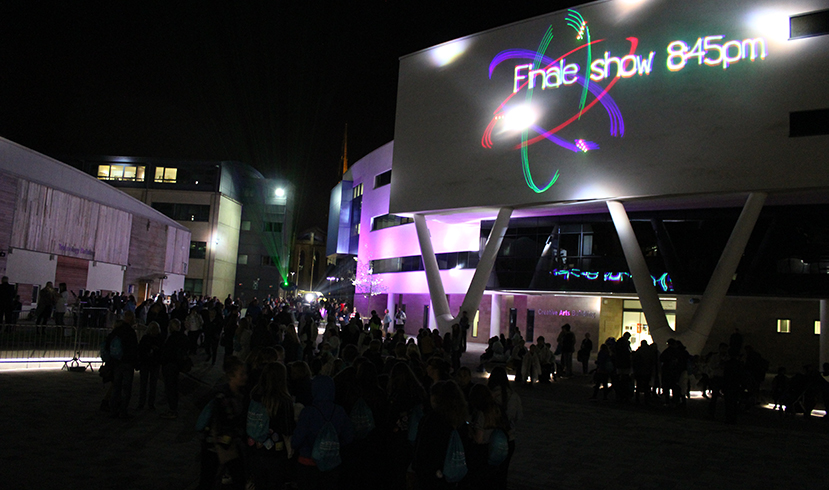
Mon, 03 Oct 2016 14:40:00 BST
The University of Huddersfield was one of just eleven universities in the UK invited to stage an event
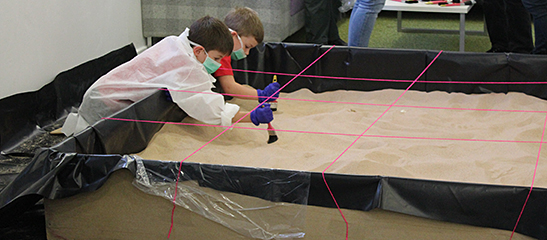 THE University of Huddersfield’s campus was transformed into one of the world’s biggest laboratories when it played host to more than 2,000 visitors who had a choice of 40 fascinating workshops, demonstrations and special events illuminating a vast spectrum of scientific research and innovation. The night was capped by a spectacular firework and laser display – plus a world record attempt.
THE University of Huddersfield’s campus was transformed into one of the world’s biggest laboratories when it played host to more than 2,000 visitors who had a choice of 40 fascinating workshops, demonstrations and special events illuminating a vast spectrum of scientific research and innovation. The night was capped by a spectacular firework and laser display – plus a world record attempt.
The event was a UK component of European Researchers’ Night, which takes place in more than 300 cities across Europe every September. The University of Huddersfield’s contribution was subtitled A Journey of Discovery and guiding visitors on their journey around the campus were 50 members of staff plus 60 volunteer postgraduate research students.
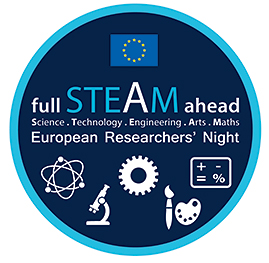 On arrival, all visitors were issued with a disposable lab coat – essential wear for some of the workshops – so that the campus was filled with white-coated budding boffins, including hundreds of children and their parents. Young visitors included large numbers of Brownies, who were awarded a special badge for their attendance.
On arrival, all visitors were issued with a disposable lab coat – essential wear for some of the workshops – so that the campus was filled with white-coated budding boffins, including hundreds of children and their parents. Young visitors included large numbers of Brownies, who were awarded a special badge for their attendance.
Among many other subjects, visitors could learn all about the science behind magic … the technology of 3D printing… the secrets of forensic science… the wonders of virtual reality…electronic music making… the power of turbochargers… and the nutritional value of eating insects.
The packed programme also included a live link with scientists at CERN in Geneva, a railway bridge building challenge, an insight into the science behind lie detection and a chance for families to design their own coat of arms.
Organisers of the Researchers’ Night are delighted by its success and by the response from the public. A key member of the team, University Research and Impact Officer Esmay Walker, said that she had received large numbers of messages from excited visitors.
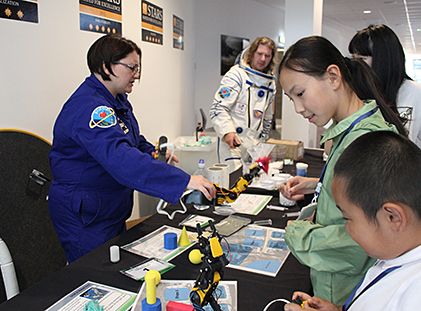 Comments included:
Comments included:
- “….had a great time eating crickets and worms, taking fingerprints and digging for bones, growing crystals... all sorts of fun things to do and learn about. Finished off with a grand finale of fireworks and lasers. Well done and thank you to all those involved.”
- “Both my children came to look around the Researchers’ Night event, not quite sure of what they were going to find, but both came away buzzing about the things they had seen.”
- “We had promoted the event at school and it was excellent to see a large number of our pupils there. I attended with my own daughter who had an excellent time and has decided that she is going to be an archaeologist or 'the type of chemistry person who looks at crystals'. She was absolutely thrilled to win a prize and is still giddy about it two days later.”
- “Wow, wow, wow. That event was amazing and we didn’t get round half the activities and talks. Laser pyrotechnics finale absolutely awesome. The show engulfed you.”
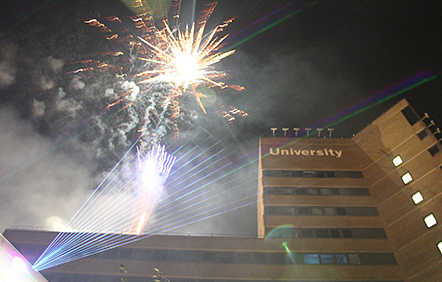 European Researchers’ Night is funded by the European Commission via the EU’s Marie Sklodowska-Curie actions (MSCA). The University of Huddersfield’s funding is for two events, so it will happen again in September 2017. Now that the groundwork has been laid and lessons learned, the next Researchers’ Night will be even bigger and better, said Esmay Walker.
European Researchers’ Night is funded by the European Commission via the EU’s Marie Sklodowska-Curie actions (MSCA). The University of Huddersfield’s funding is for two events, so it will happen again in September 2017. Now that the groundwork has been laid and lessons learned, the next Researchers’ Night will be even bigger and better, said Esmay Walker.
A centrepiece to the 2016 event was an attempt to establish a Guinness World Record by constructing the largest-ever atomic model of a protein structure. Visitors witnessed lecturers and students constructing the model, which is the size of a large cow and represents more than 15,000 atoms.
Sponsorship was provided by the firm molymod, which is a world leader in supplying molecular models for scientific research. A Guinness team is now carrying out an appraisal before officially validating the world record.
Senior Lecturer in Biological Sciences Dr Christopher Cooper, who organised the bid with his colleague Dr Richard Bingham, explained that that the record attempt was timed to mark the start of Breast Cancer Awareness Month. The protein structure being modelled is from an important gene implicated in the disease and as visitors watched the giant molecule taking shape they were given information packs about breast cancer.







